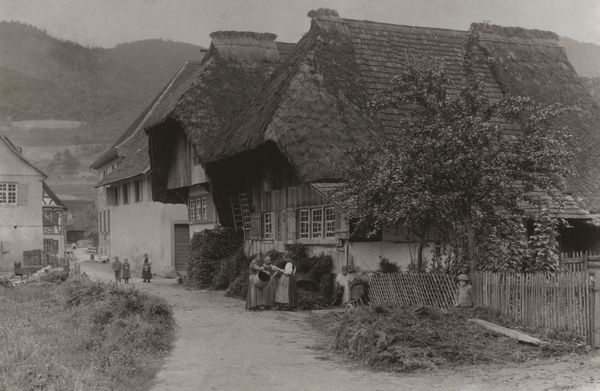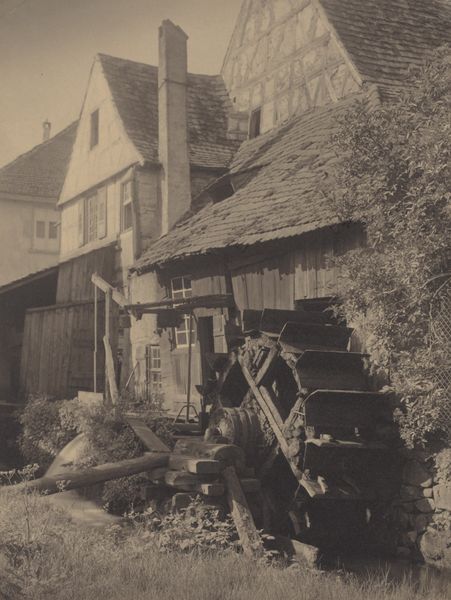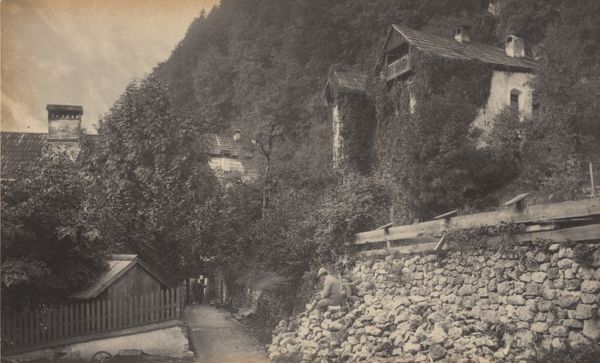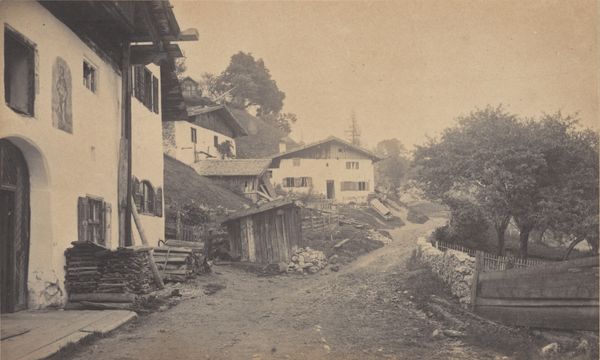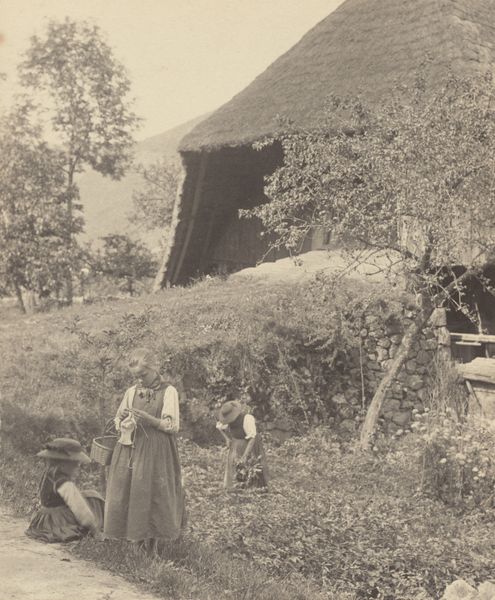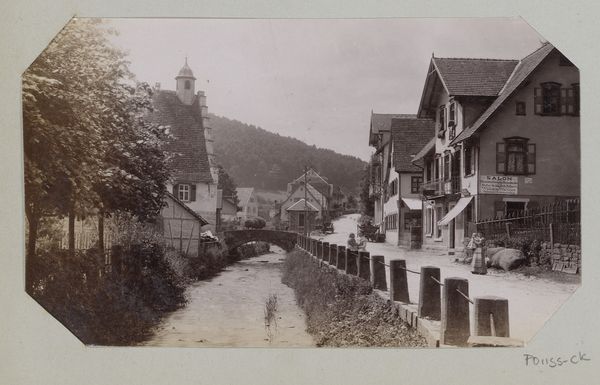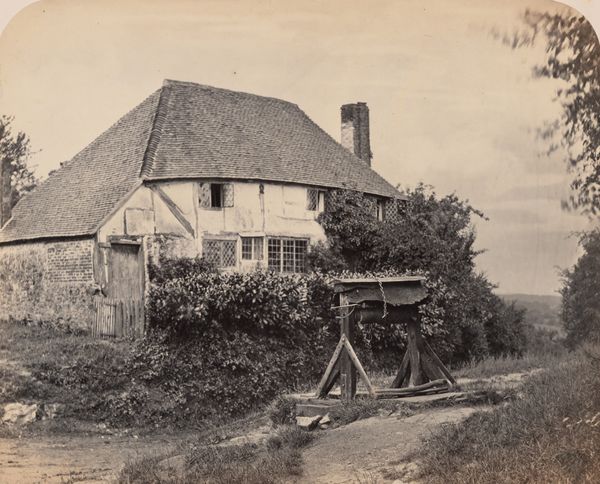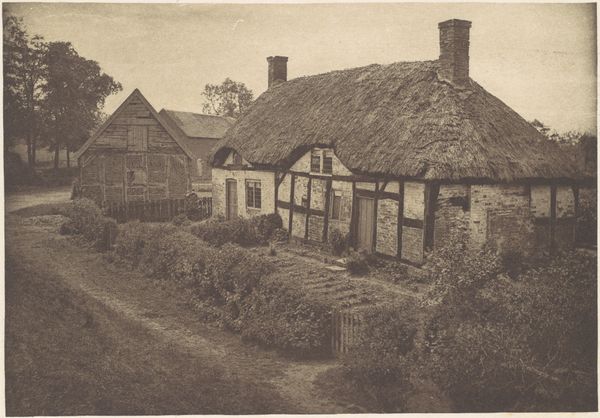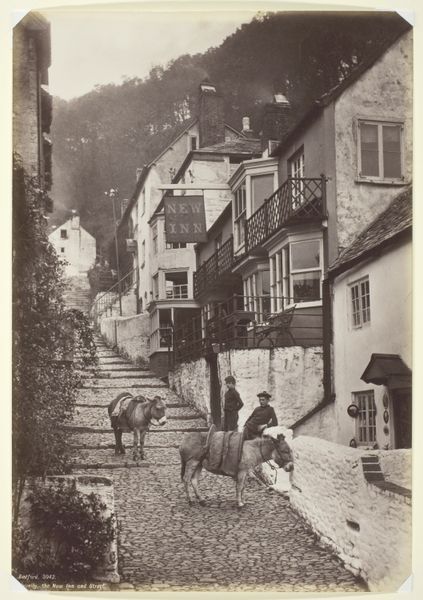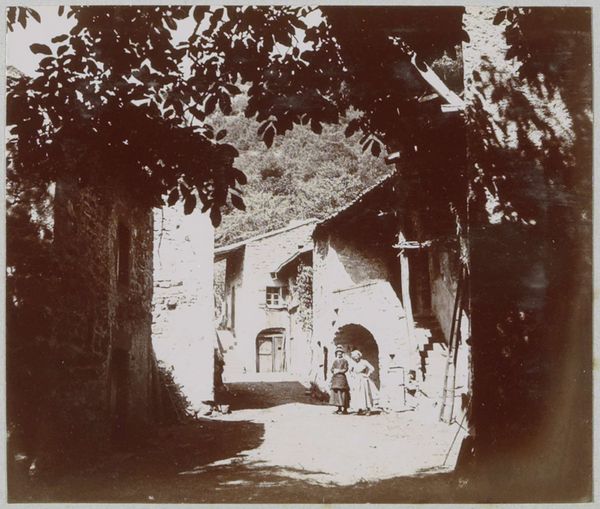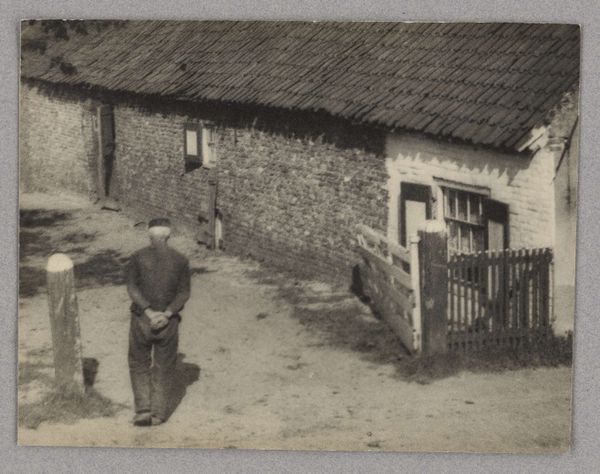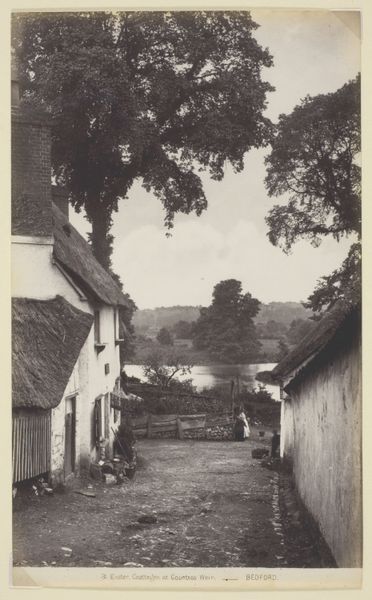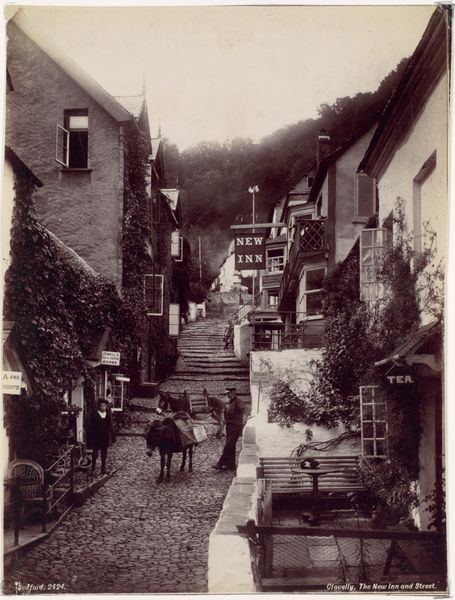
Dimensions: sheet (trimmed to image): 13.5 × 18.8 cm (5 5/16 × 7 3/8 in.) page size: 34.8 × 27.3 cm (13 11/16 × 10 3/4 in.)
Copyright: National Gallery of Art: CC0 1.0
Editor: This gelatin-silver print is called "Gutach Children," and it was taken by Alfred Stieglitz sometime between 1894 and 1896. There's a really lovely, quiet feel to this rural scene. What strikes you about this work? Curator: Well, focusing on the materiality, notice the gelatin-silver print. It allowed for a tonal range and detail previously unseen in photography. Consider Stieglitz’s deliberate choice to capture this specific scene and reproduce it using this relatively new technology. It’s not just about representing rural life, but about the very act of production and its relationship to society. Think about the labor involved in constructing those buildings, gathering the materials for the thatched roof. How does this impact the viewing of photography itself? Editor: That's interesting! I was really focused on the subjects. But looking at the material aspect, did the relatively accessible form influence who got to be portrayed or how scenes were composed? Curator: Precisely! Gelatin-silver prints democratized photography to some extent, moving it from elite studios to being more available to wider segments of the middle class. How do you think that access changes our understanding of realism and representation during the 19th century? What realities were previously invisible that are now brought to light through photography? Editor: So, it's not just the children in the image, but who is holding the camera, who processes the print, who views and buys this work... that really shifts the focus of the image, doesn't it? Curator: Exactly. And even further, what were the labor relations involved? Where did the materials come from? We can connect the image’s aesthetic qualities directly to the processes and contexts surrounding its making. This allows us a greater understanding of societal structure embedded in its existence as a commodity. Editor: I see that. It's about looking beyond the surface of the picture, tracing it back to the broader forces and materials involved in its creation. Thank you! Curator: Absolutely! Thinking about materials allows for us to broaden our perspectives and enrich our analysis, questioning the role that materials, production, and consumption play in our world and how it frames how we see everything, even this photograph.
Comments
No comments
Be the first to comment and join the conversation on the ultimate creative platform.
